Personalization at scale: how to deliver meaningful customer experiences to millions
Published on May 02, 2025/Last edited on November 11, 2025/12 min read

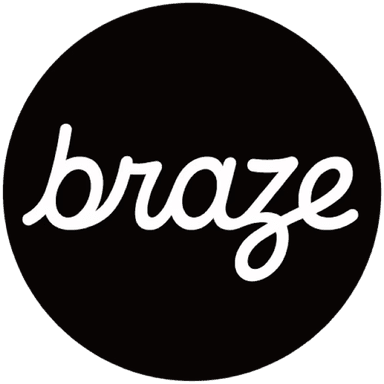
Team Braze
Marketers have been personalizing for years, but the game has changed. Today’s customers expect experiences that feel seamless and relevant across every channel—whether they’re browsing a website, opening an app, or reading an email. Meeting that expectation across millions of profiles and countless touchpoints is what makes personalization at scale so powerful, and so challenging.
For enterprises, the challenge isn’t just sending more messages—it’s coordinating personalization across global teams, regions, and business units. That requires tools built for scale, with governance, flexibility, and orchestration that works across every customer touchpoint.
This guide explores how brands can move beyond basic tactics to true personalization at scale. We’ll look at the obstacles that often get in the way, the business benefits of doing it right, and the tools and strategies that make it possible. Along the way, you’ll see how leading companies use Braze to orchestrate personalized journeys with real-time data, AI-driven decisioning, and cross-channel engagement.
In this guide we’ll look at:
What does personalization at scale mean?
The benefits of marketing personalization at scale
How to achieve personalization at scale
Real-life personalized marketing examples at scale
Tools and features that power personalization at scale
The future of personalization at scale
What does personalization at scale mean?
Personalization at scale is the ability to adapt content, offers, and experiences to each customer—across millions of profiles and multiple channels—in real time. It goes far beyond adding a first name to an email or sending a birthday coupon.
At this level, brands use AI-driven personalization and unified profiles to connect the dots between behavior, preferences, and context. That means every email, push, in-app message, or SMS is shaped by what the individual is doing right now, and how they’ve engaged in the past.
The difference between personalization and personalization at scale is scope. Basic personalization can handle one channel or a few customer attributes. Scalable personalization delivers consistency across whole journeys, with a personalization engine that automatically adjusts timing, content, and channel for each person. It brings together your data to form a holistic view of individual customers—whether they’re known, new, or anonymous—so you can engage them with relevant content across mobile apps, websites, email, SMS, and more.
Why does this matter? As audiences grow, so does complexity. Marketers for enterprise and mid-market companies need ways to maintain relevance across cross-channel orchestration without multiplying manual work. Marketing personalization at scale makes it possible to deliver individualized experiences that feel timely and valuable—even as customer bases number in the millions.
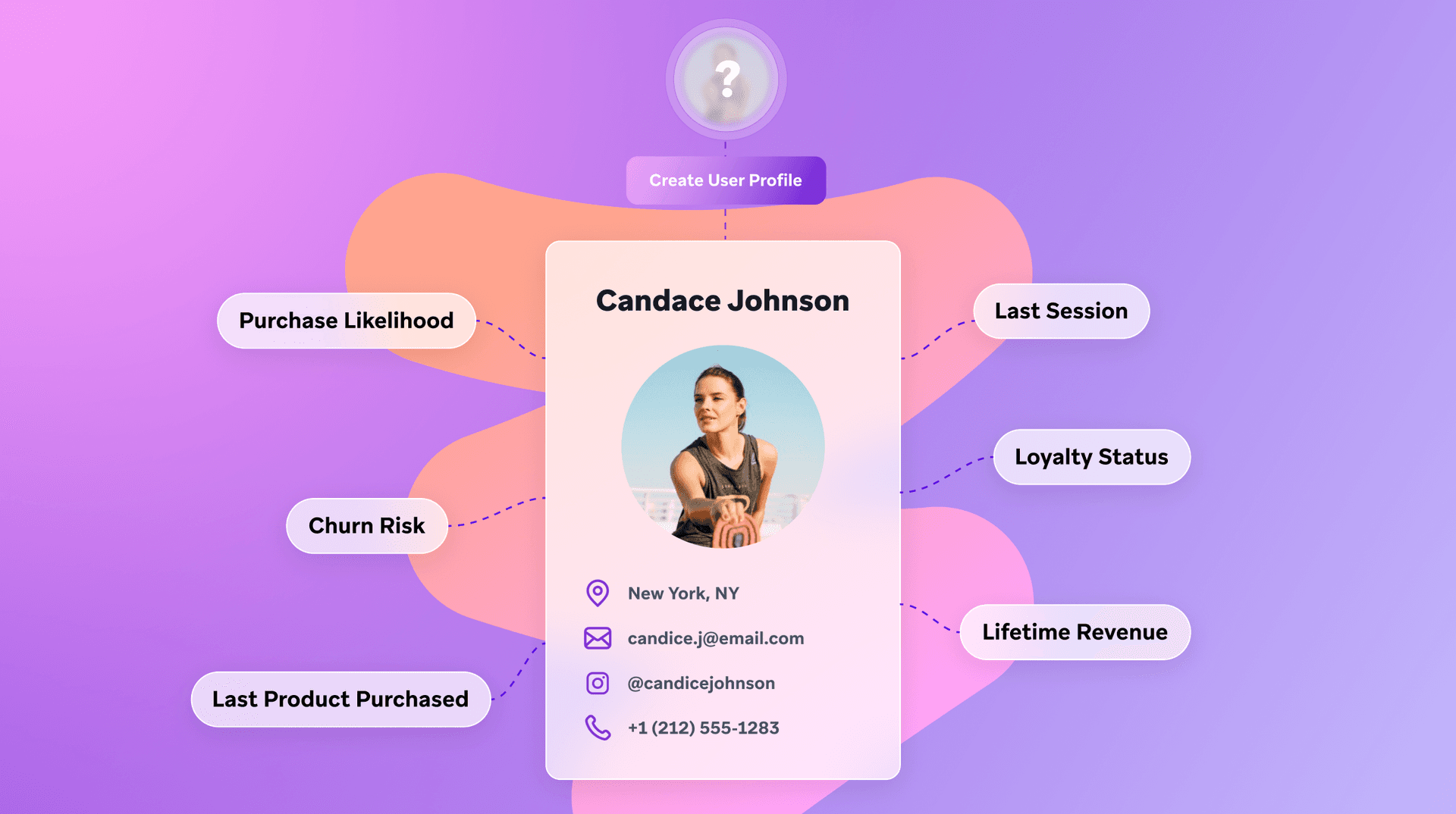
The challenges of scaling personalization
Making personalization work for a handful of customers is simple. Making it work for millions across apps, websites, email, and more takes a different kind of setup. Here are some of the largest hurdles marketers face:
Data fragmentation
Customer information is often scattered across different systems—purchase history in one place, app usage in another, email engagement somewhere else. Without bringing this together, it’s hard to see the full picture of who a customer is and how they interact with your brand.
Manual testing bottlenecks
Scaling personalization means tailoring subject lines, offers, images, and timing. Doing that by hand—through endless A/B tests—quickly becomes overwhelming. Teams spend more time setting up experiments than acting on results.
Legacy marketing automation limitations
Many companies still rely on older tools that only handle one channel at a time. That makes it difficult to create journeys that feel connected, with each message flowing naturally into the next.
Privacy and compliance barriers
Customers want personalization, but they also want control over their data. Balancing relevance with respect for privacy—and staying compliant with changing regulations—adds another layer of complexity.
The benefits of marketing personalization at scale
When personalization scales, it does more than making campaigns feel smarter; it reshapes the customer experience and the bottom line. Here are some of the key wins that enterprise personalization strategies can deliver:
Higher engagement and conversion
Messages that adapt in real time to behavior and context feel relevant. Whether it’s a product suggestion in an email or an in-app message triggered by recent activity, real-time personalization sparks action.
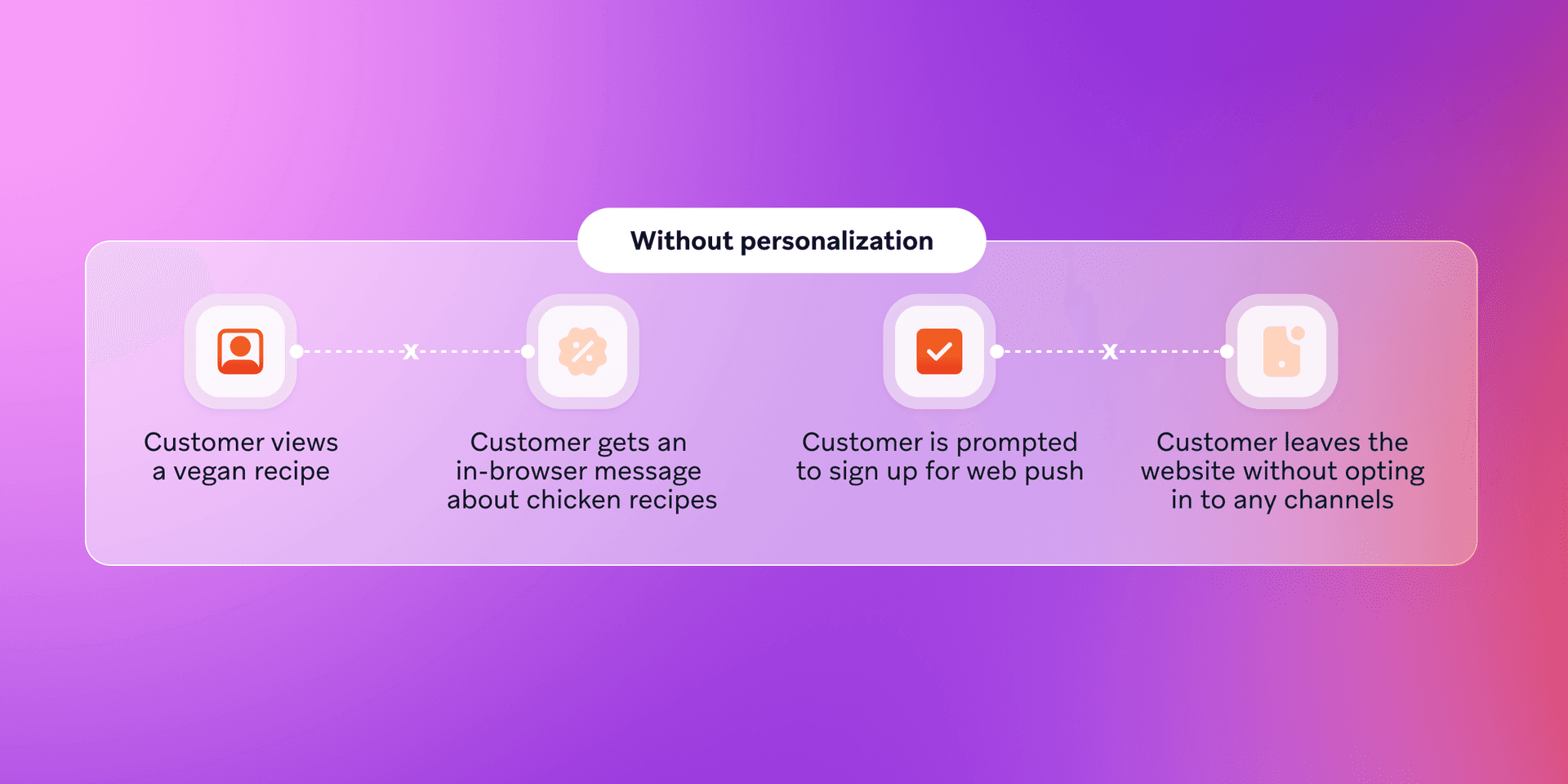
Stronger customer loyalty
Personalized journeys keep people coming back. Brands that invest in individualized marketing—where every interaction is shaped by past preferences and predicted needs—see higher retention and repeat purchases.
Increased customer lifetime value
By using predictive personalization, marketers can anticipate what customers are most likely to buy, the best channel(s) to reach them, and the right moment to engage. This can lead to larger order values and longer-term relationships.
Better ROI and efficiency
A personalization engine powered by AI-driven personalization reduces wasted spend on irrelevant outreach. Instead of manually testing every variation, teams can rely on dynamic content and automation to serve the best version at scale.
A competitive advantage
Customers compare every brand experience to the best they’ve had elsewhere. Companies that embrace scalable personalization across touchpoints gain an edge, especially as privacy changes limit less targeted methods. At the enterprise level, personalization at scale also drives operational efficiency. Instead of siloed teams running disconnected campaigns, enterprises can centralize data, align on enterprise personalization strategies, and deliver consistent experiences worldwide—backed by the compliance and privacy standards customers expect.
How to achieve personalization at scale
Delivering tailored experiences to millions of people might sound daunting, but with the right strategy and technology, it’s possible to make personalization both practical and scalable. Here are four building blocks that help brands put enterprise personalization strategies into action.
1. Build unified profiles with customer data platforms
Data is the foundation of scalable personalization. Many brands struggle with fragmented customer information which leads to purchases in one place, app activity in another, and email engagement somewhere else.
A customer data platform (CDP) brings all of this together into unified profiles, combining:
- First-party data (like purchase history, app activity, browsing behavior)
- Zero-party data (like preferences or interests that customers share directly)
When these sources are connected, every interaction reflects the most up-to-date picture of each customer, making it possible to personalize with accuracy, consistency, and trust.
2. Use a personalization engine powered by AI and machine learning
Manual rules and static segments can only take you so far. A modern personalization engine uses AI-driven personalization to recommend products, predict behaviors, and optimize outreach. Solutions like BrazeAI Decisioning Studio™ go one step further—as an AI decisioning engine built on reinforcement learning, it allows you to automate experimentation and make one-to-one personalization possible at scale. BrazeAI Decisioning Studio™ is designed to continually learn the right message, timing, channel, and incentive to personalize and customize communication for each individual customer.
3. Orchestrate journeys across channels
People don’t stick to one channel, and your personalization strategy shouldn’t either. With cross-channel orchestration, brands can connect email, push, SMS, in-app, and web into one flow so every message feels like part of the same conversation.
Tools like Canvas make this orchestration manageable at scale. Instead of juggling disconnected platforms, marketers can map journeys visually, set up journey automation, and adapt paths in real time as customer behavior changes. The result is outreach that moves with people, not just to them, whether they’re opening an email at work or checking a mobile app on the go.
4. Activate real-time triggers
Personalization works best when it’s in the moment. Behavioral and contextual personalization allows brands to trigger messages based on what customers are doing in real time, whether that’s browsing a product, abandoning a cart, reaching a milestone in an app, or entering a new location. These real-time triggers make outreach feel natural and responsive, turning data into action at exactly the right time.
5. Scale with dynamic content and testing
Scalable personalization means creating message variations without overwhelming teams. With dynamic content, marketers can pull in real-time data around location, recent activity, or loyalty status, directly into templates, making every message feel timely and relevant.
But content is only half the equation. Testing and optimization frameworks keep campaigns improving at scale. Automated experiments, such as AI-powered A/B tests, identify which variations resonate best, while optimization tools automatically promote the winning versions. Instead of drowning your team in manual setup, you can keep learning, iterating, and personalizing over time.
Real-life personalized marketing examples at scale
From sports streaming to global design, these enterprise personalization strategies show how Braze adapts across industries. Whether it’s media or software as a service (SaaS), enterprises use Braze to coordinate personalization at scale and prove impact on growth, engagement, and loyalty.
Kayo Sports wins big with AI-powered personalization
Launched as part of the Foxtel Group, Kayo Sports is Australia’s largest and fastest-growing sports streaming service. With over 50 sports streamed live and on demand, the brand needed a way to personalize experiences for its diverse audience of fans.
The problem
Kayo Sports needed to engage a broad audience across devices and channels. Existing systems limited personalization and didn’t fully leverage their data, leading to generic customer experiences and missed opportunities for engagement.
The strategy
Kayo Sports built its Customer Cortex personalization engine. Using reinforcement learning integrated with Braze and AI-driven personalization, the platform analyzed individual behavior and preferences to determine the optimal message, creative, channel, timing, and frequency for each subscriber. Journeys were orchestrated through Braze Canvas, delivering personalized messages via email, SMS, push, and in-app, all triggered in real time.

The results
Kayo Sports scaled from 300 variations of communications to 1.2 million, creating true 1:1 marketing personalization at scale. The approach drove a 14% increase in subscriptions in fiscal year 2024, an 8% lift in average annual occupancy, and a 105% boost in cross-sells—even as average subscription prices rose 20%.
Canva proves email can engage at global scale
Canva is an online graphic design platform with a mission to empower the world to design. Serving millions of users worldwide, Canva needed a way to communicate at scale without losing the relevance and personalization that keeps their community engaged.
The problem
During the pandemic, Canva needed to deliver timely, helpful content to millions of users. The challenge was to maintain high deliverability while scaling email volume and tailoring messages to users’ languages and interests.
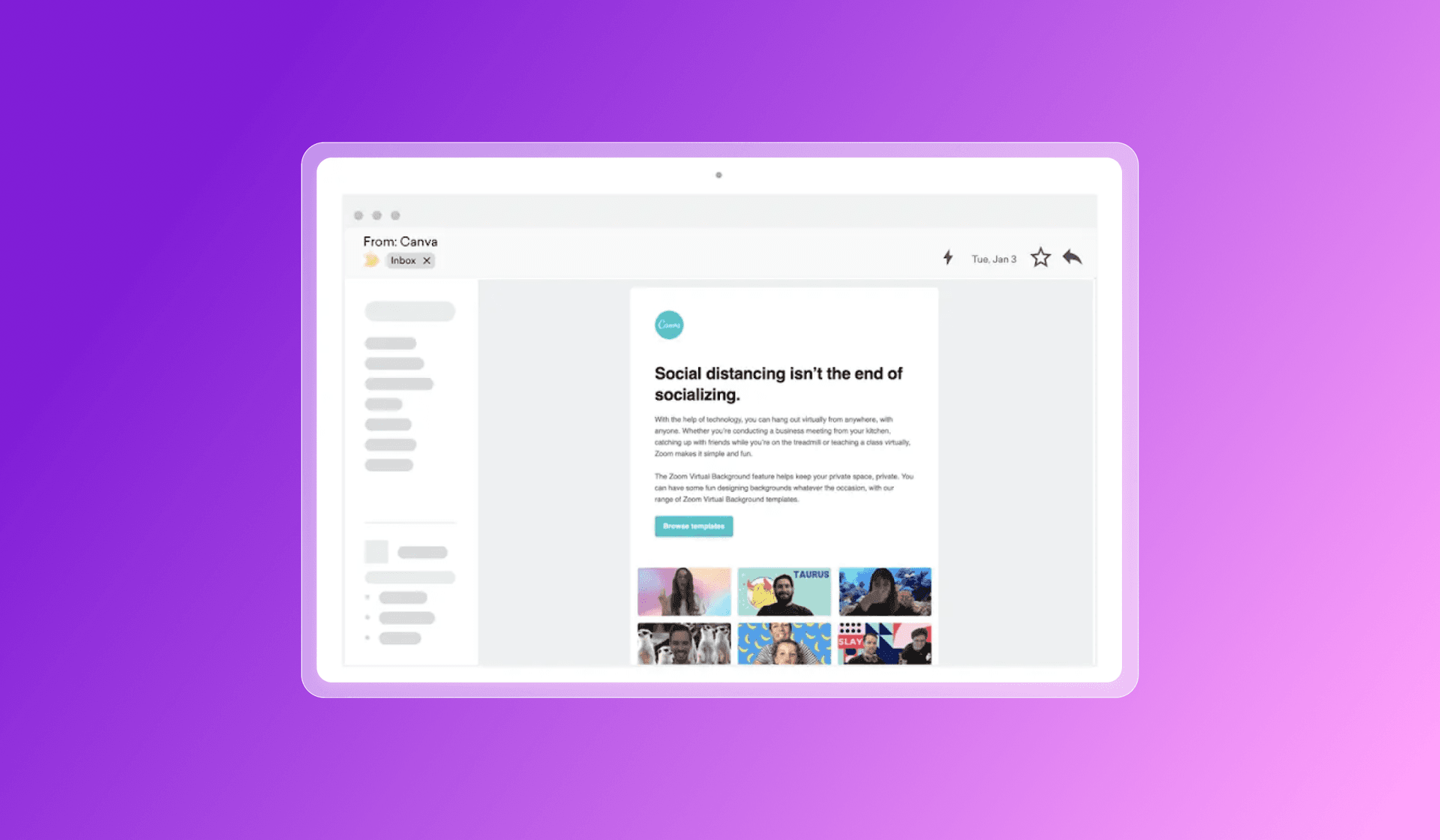
The strategy
Using Braze, Canva scaled email sends from 30 million to 50 million weekly while maintaining strong inbox placement. Through Connected Content and a new localization strategy, the team automated content translation via Google Sheets API, ensuring relevant experiences in over 20 languages. They combined dynamic content with the Braze platform’s email tools to quickly personalize recommendations and tutorials.
The results
Canva achieved a 33% increase in open rates and a 2.5% lift in engagement while maintaining 99% deliverability across their massive global audience. With scalable personalization baked into their email strategy, Canva strengthened loyalty and continued to grow engagement across regions.
Tools and features that power personalization at scale
Behind every personalized experience is a set of tools that make it possible to act quickly, adapt automatically, and deliver consistently across millions of touchpoints.
Data streaming and integrations
Data doesn’t have to sit in silos. Solutions like Braze integrate with other systems to stream data directly into the platform. This means customer event data—from a recent purchase to a loyalty status update—flows in real time, ready to trigger personalized messaging the moment it happens.
AI and machine learning personalization engines
Manual rules can’t keep up with the complexity of millions of users. BrazeAI Decisioning Studio™ acts as a decisioning layer, integrated with your martech stack, to apply reinforcement learning to constantly test and optimize, so each individual receives the best message, through the best channel, at the best time. It’s an always-on personalization engine that adapts without manual intervention.
Dynamic content and message variation
With Braze Connected Content, brands can pull in live information from APIs or internal systems at send time. That could be local weather, a live sports score, or updated pricing. Combined with message variation tools, this feature makes it possible to scale creative without creating hundreds of static templates.
The future of personalization at scale
Personalization is evolving quickly, and what feels advanced today will soon become the new baseline. Looking ahead, three shifts are shaping the next era of scalable personalization:
AI as a co-pilot
Marketers are moving from setting rules to guiding systems. With advances in AI-driven personalization, solutions like BrazeAI Decisioning Studio™ can act as co-pilots—automatically suggesting the next best action, testing variations, and adapting journeys in real time. This frees teams to focus on strategy and creativity while the system handles ongoing optimization.
Multimodal and contextual engagement
Experiences won’t be limited to screens. Voice, connected devices, and even in-car systems are emerging as new touchpoints. Future journey automation may weave these channels into existing flows, delivering seamless engagement wherever customers choose to interact.
Privacy-first personalization
As regulations tighten and customer expectations rise, real-time personalization will depend on trusted data sources. That means making the most of first-party and zero-party data, and building transparency and control into every experience. Brands that respect privacy as they deliver value will build stronger loyalty over the long term.
For global enterprises, this means adopting a platform capable of managing regional regulations, data residency requirements, and customer preferences—while still enabling real-time personalization everywhere you operate.
Final thoughts
Scaling personalization is the next frontier. Customers expect more than one-size-fits-all experiences, and brands that can deliver marketing personalization at scale—using real-time data, AI decisioning, and cross-channel orchestration—will be the ones that drive deeper engagement, loyalty, and growth.
Braze brings these capabilities together in one platform. From Canvas for journey automation, to Connected Content for dynamic personalization, to BrazeAI Decisioning Studio™ as a reinforcement-learning personalization engine that natively integrates, Braze helps teams turn complex data into meaningful customer experiences.
Personalization at scale FAQs
Personalization at scale means delivering tailored content and experiences to millions of customers across channels. It uses real-time data and automation to make every interaction feel relevant.
Enterprises need personalization at scale to meet customer expectations and stand out in competitive markets. It drives loyalty, higher retention, and stronger long-term growth.
The benefits include higher engagement, better conversion rates, and increased customer lifetime value. It also creates more efficient marketing by reducing wasted spend on irrelevant outreach.
Brands achieve personalization at scale by unifying customer data, applying AI for decisioning, and orchestrating cross-channel journeys. Using tools for real-time triggers, dynamic content, and automated testing helps scale without overwhelming teams.
Key tools include customer data platforms, AI-driven personalization engines, and journey orchestration platforms. Features like dynamic content and testing frameworks make it possible to keep improving at scale.
Braze combines real-time data, cross-channel orchestration, and AI-powered decisioning in one platform. With Canvas, Connected Content, and BrazeAI Decisioning Studio™, brands can create individualized journeys at enterprise scale.
AI powers predictive personalization by analyzing behavior and automating decisions. It selects the best message, timing, and channel for each individual, continuously improving over time.
Personalization often means simple tactics like adding a name to an email. Providing personalized recommendations at scale uses data, automation, and orchestration to deliver individualized experiences to millions of people at once.
Related Tags
Be Absolutely Engaging.™
Sign up for regular updates from Braze.
Related Content
View the Blog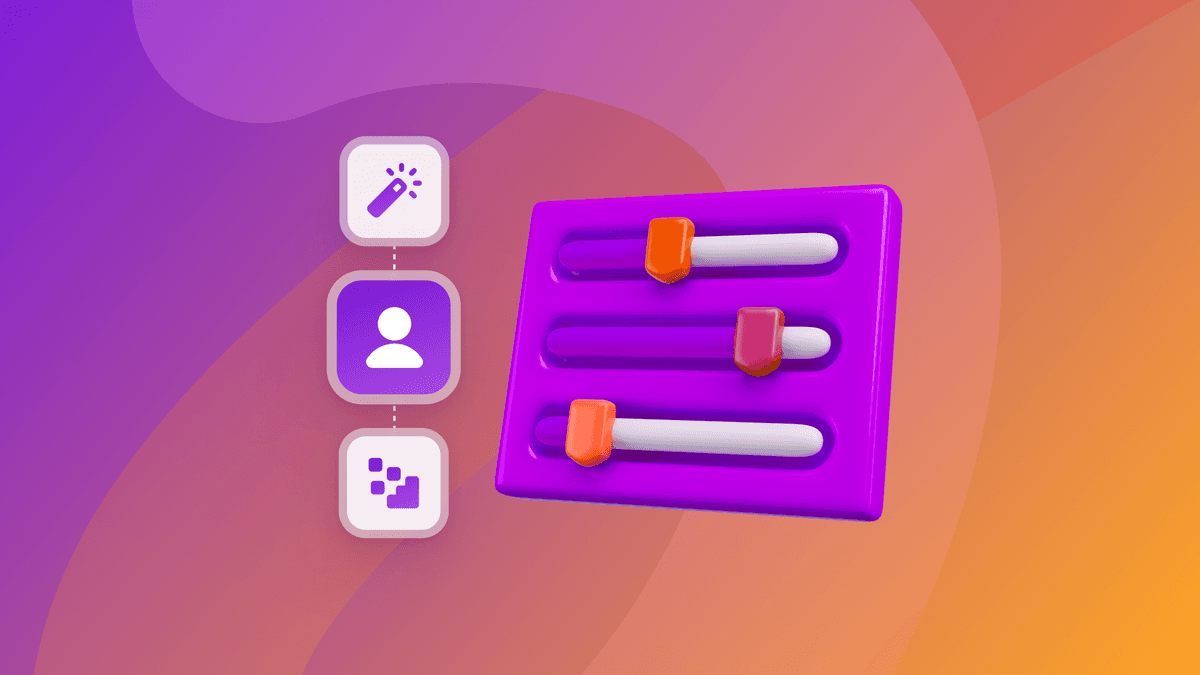
How behavioral marketing turns data into personalized experiences

Team Braze
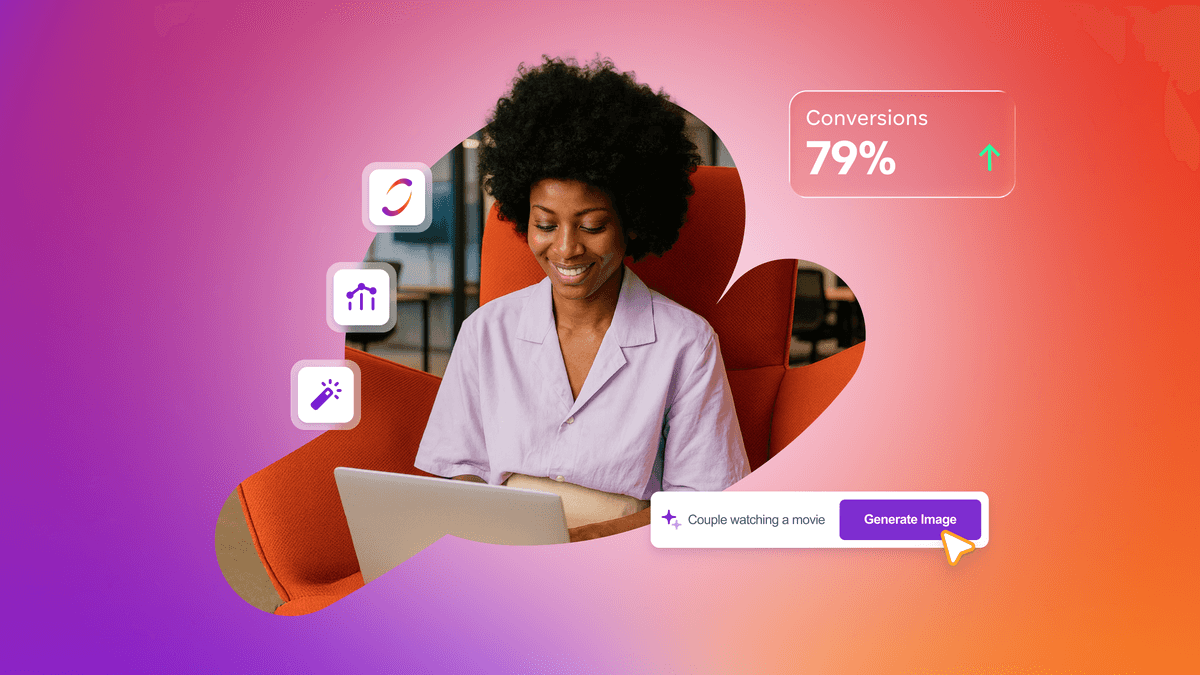
Are you AI-savvy enough to survive? A wake-up call for CMOs

Team Braze

What are contextual bandits? The AI behind smarter, real-time personalization
